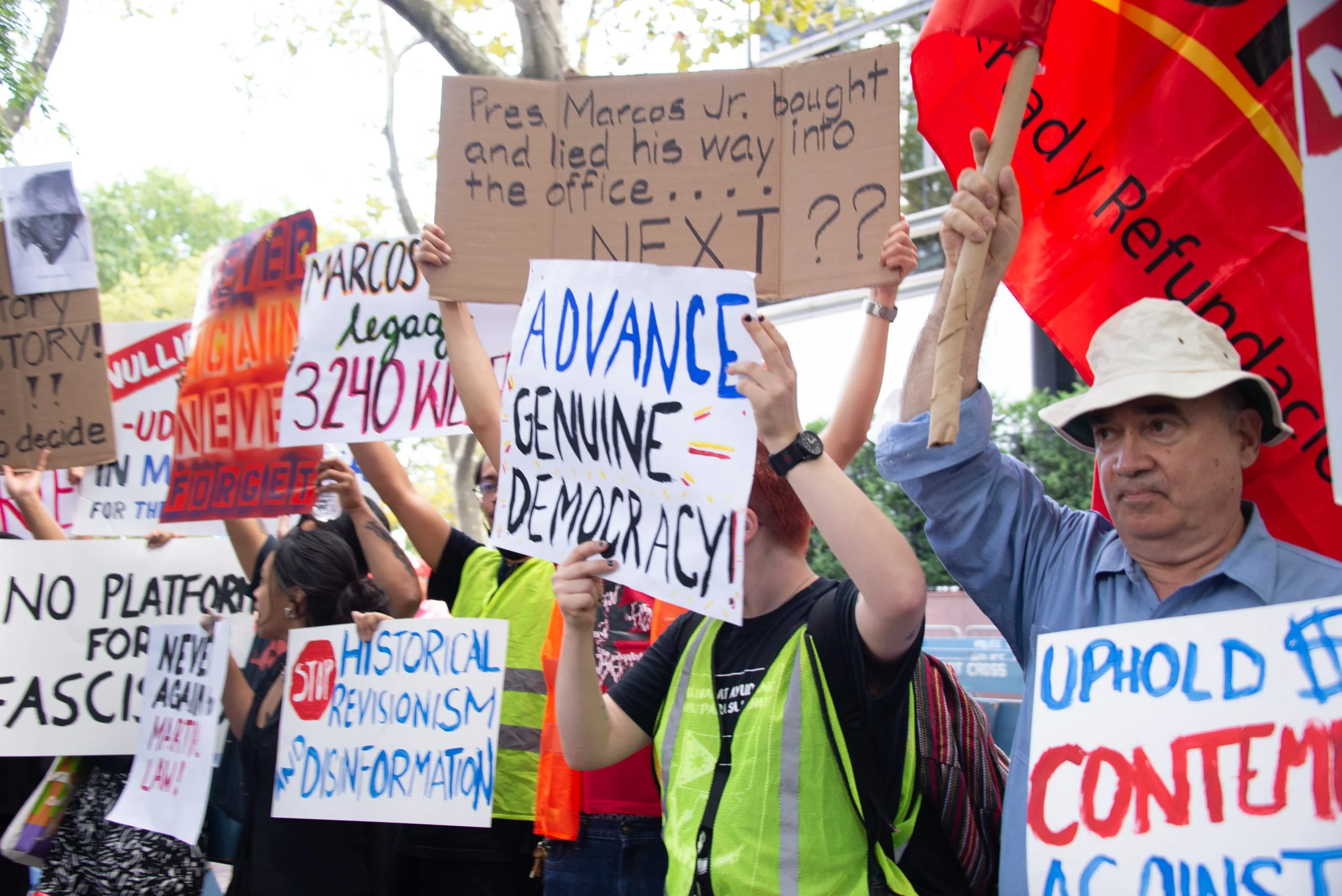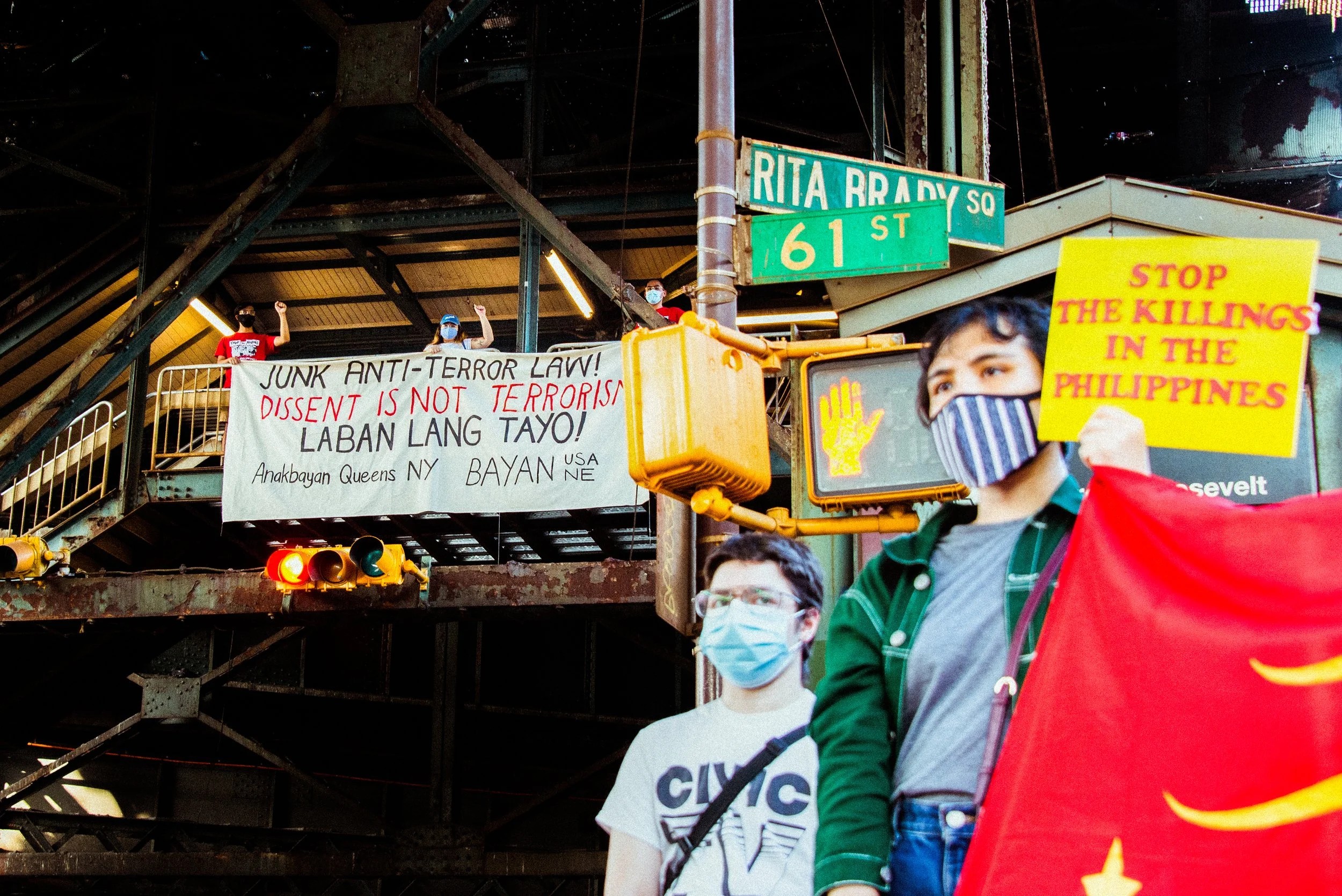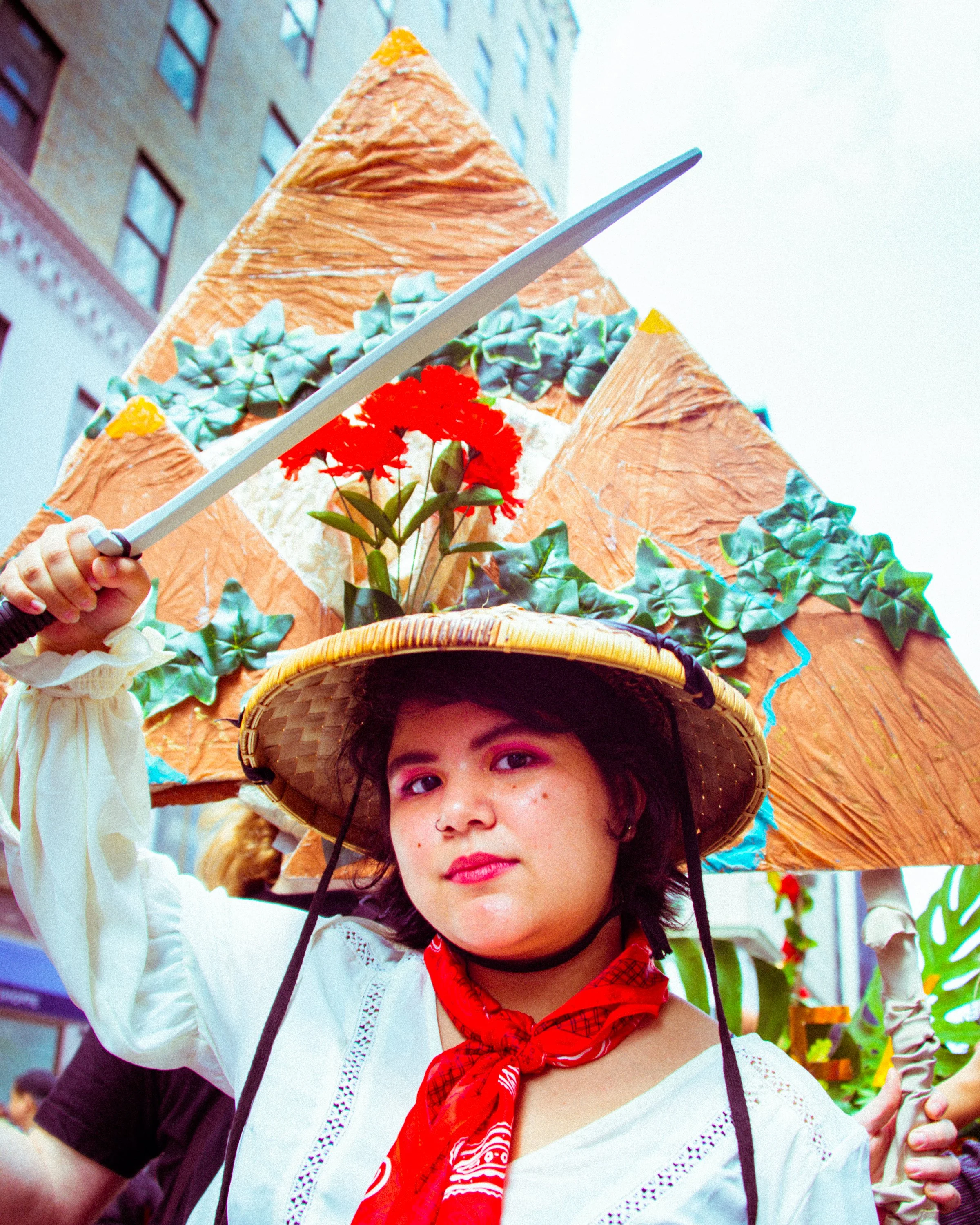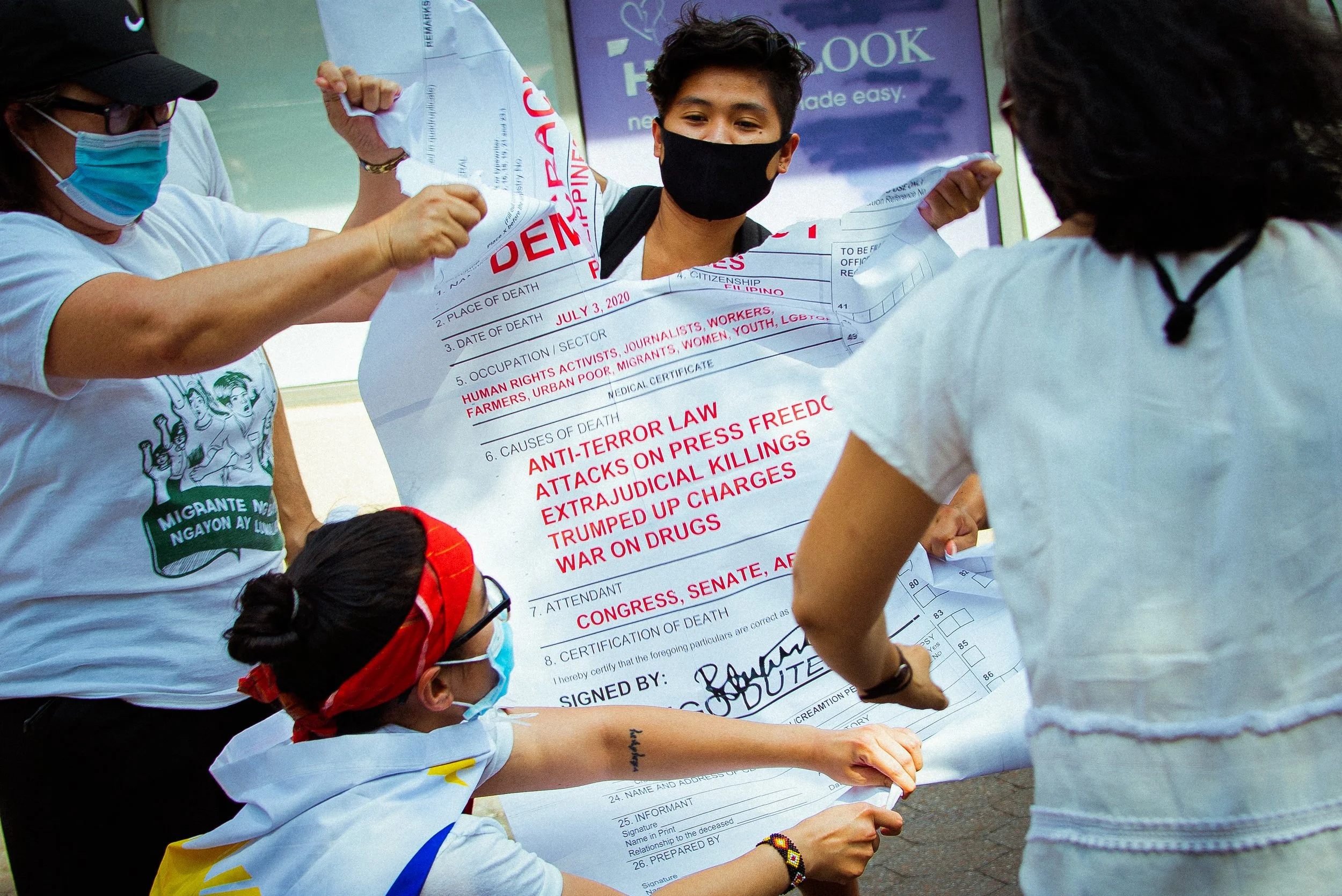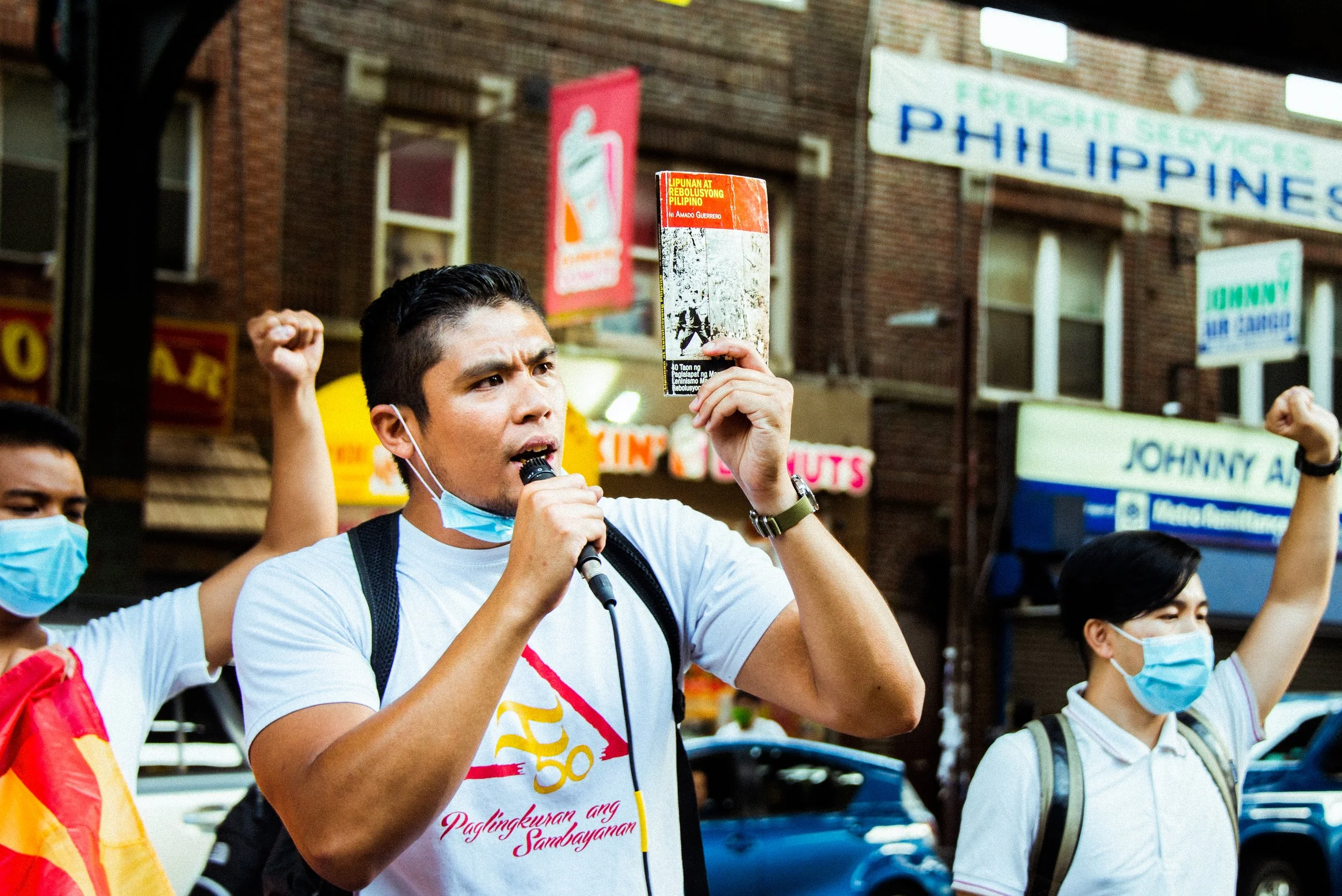Makibaka! Huwag matakot!
Makibaka! - “fight!”
Huwag matakot! - “don’t be afraid!”
This was the battlecry of the Filipino youth-led movement against the fascist Marcos dictatorship in the 1970s-1980s.
A chant leader yells, “makibaka!” and the masses respond, “huwag matakot!”
It is still used today by Filipino activists in the Philippines and in the diaspora.
These photographs document activists in the Filipino national democratic movement in New York, which is a broad-based alliance of organizations that fights for true Philippine sovereignty. Only when United States imperialism, feudalism, and bureaucrat capitalism fall in the Philippines can the Philippines truly be free.
Makibaka, 2019
A Filipina holds a fan that says, "makibaka” - which translates to, “fight!” or “struggle!” in Tagalog.
Philippine Independence Day Parade, 2019
Filipino activists march down 5th Ave. for the Philippine Independence Day Celebration. The New York parade is the largest Philippine Independence Day celebration outside of the Philippines.
September 20, 2022:
50th Anniversary of Martial Law
aka ML50
On the 50th anniversary of martial law, President Ferdinand Marcos, Jr. dared to show his face in New York. Hundreds of Filipinos from across the Northeast marched to the United Nations to confront Marcos and express their disdain of his presidency and the and the crimes of the Marcos family.
Infamous for their effigies, Filipino activists created a Marcos Jr. effigy with US dollar bills as his snake-tongue. The dollars represent how Marcos is in New York to sell the Philippines to the highest bidder. He is trailed by the flags of various Filipino organizations.
Calls
What gets written on a placard is a “call.”
Before any action, calls are decided by the collective in order to ensure our messages align with the movement for national democracy in the Philippines.
(top to bottom)
1. “‘Reject BongBong Marcos'” - Martial Law 50, NYC 2022
2. ”Defeat Duterte-Marcos” - during Philippine election season, 2022
3. Various placards, some that outline the heinous Marcos legacy
Kalay, 2022.
Gatch singing the Philippine national anthem, 2022.
Banner Drop at Woodside Station, 2020.
Members of Anakbayan Queens hold a banner drop at the Woodside train station in Woodside, AKA Little Manila, Queens. Anakbayan translates to “children of the country,” and members represent the youth sector of the Filipino national democratic movement.
Banner drops are relatively high-risk actions, as they have high visibility in public spaces so interactions with the police are likely. Activists held this action in Woodside, a city that is home to many immigrant Filipinos, to protest Duterte’s Anti-terror Law, which is legislation that deems activists as terrorists and allows for state-sanctioned violence against human rights defenders and any civilians who critique the government.
Stop the Killings in the Philippines!, 2020
A coffin is painted with the names of those slain during Duterte’s fascist regime.
”STOP THE KILLINGS!” is painted on the top of the coffin. Placards calling for JUSTICE with pictures and names of those who have died are placed in front of the coffin like a shrine.
Wall of Martyrs, 2022
A wall of martyrs assembles in front of the United Nations while Marcos Jr. gives a speech behind the walls of the institution. These are faces of those who disappeared or died during the fascist regime of his father, Ferdinand Marcos, in the 1970s and 1980s. Many of those slain were Filipino youths.
Tatsulok, 2019
A Filipino youth is dressed as a peasant farmer. Peasants make up 75% of the population of the Philippines, live in the countryside, and are mostly farmers who do not own the land they till. They are the poorest and most marginalized sector of Philippine class society.
Behind her are 3 mountains, which symbolize the three basic problems of the Filipino people: imperialism, feudalism, and bureaucrat capitalism.
Reina of Labor Export Policy, 2019
A Filipina migrant is dressed as the Reina of The Labor Export Policy.
Everyday, 7,000 Filipinos leave the Philippines to find work abroad. Filipino labor is treated like a commodity and in 2021, remittances accounted for 9% of the Philippines’s GDP.
The Labor Export Policy is the legislation that enables and promotes the emigration of Filipino people to enter the global labor force. It was started in the 1970s by Dictator Ferdinand Marcos.
On the top of her head, she wears a balikbayan box crown. The balikbayan box is an icon for Overseas Filipino Workers (OFWs) because when OFWs return home to the Philippines to visit their families, they bring back boxes full of gifts. “Balikbayan box” translates to “returning home box"."
Ienna, 2022
PSONA, 2020
PSONA stands for the People’s State of the Nation Address. The People’s State of the Nation Address is held by the masses every year to counter the President’s State of Nation address.
In this photo, activists tear a document that shows the Death of Democracy in the Philippines. Listed as the causes of death are the Anti-terror Law, attacks on press freedom, extrajudicial killings, and the war on drugs.
Lipunan at Rebolusyong Pilipino, 2020
An activist holds Lipunan at Rebolusyong Pilipino, or, Philippines Society and Revolution (PSR), a seminal text for the national democratic movement of the Philippines. It outlines the three-basic problems of the Philippines and provides a history of the Philippines told from the people’s lens.
Melissa as Gabriela Silang, 2019
Gabriela Silang is the champion for the women’s sector in the national democratic movement. She was a fearless Filipino military leader who led the Ilocano Independence Movement from Spain in 1763.
Vigil for Democracy, 2022
On election day 2022, one hundred Filipinos gathered in front of the Philippine Consulate in NYC to hold a vigil for democracy due to the fraudulent “victory” of BongBong Marcos. It was an intergenerational show of support and some of the Filipinos who participated were survivors of martial law era.





